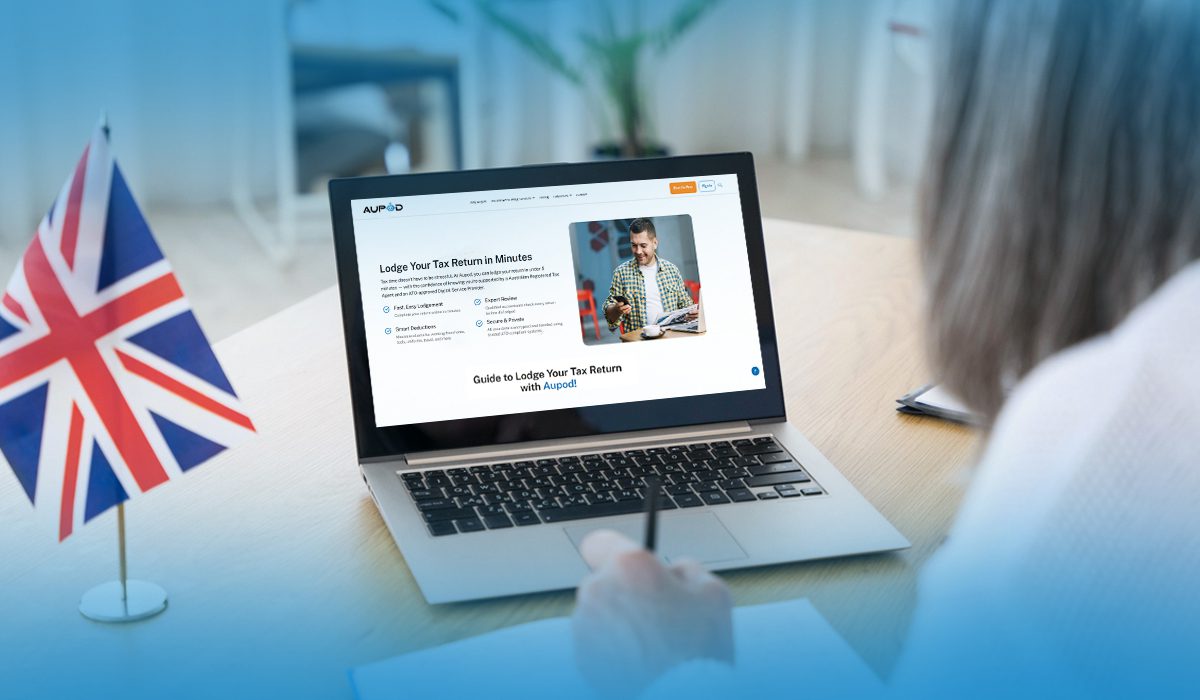There are about 823,000 sole proprietors in Australia today, people running their own businesses, often solo. Small businesses make up over 97% of all businesses in Australia, and the biggest slice of those, around 61% are sole traders.
Every sole trader chooses this path for one powerful reason: freedom. You set the hours. You make the calls. But with that freedom comes responsibility, especially when it comes to taxes. Get it right, and you keep your peace of mind and more of your money. Get it wrong, and you might have to deal with penalties, or worse, miss out on money you deserve.
Aupod offering the most competitive pricing plan helps you understand and manage your tax affairs clearly and confidently, so you can focus on what you do best-running your business.
What is a Sole Trader?
A sole trader is“the simplest and most common business structure in Australia. This setup assigns full responsibility for operations, debts, and decisions to a single individual.” The structure is quick and inexpensive to establish.
Small businesses, defined as those with fewer than 20 employees, comprise around 97.2% of all businesses in Australia. From them, roughly 62.5% are self-employed or non-employing entities, which typically correspond to sole traders.
In 2024–25, the Australian Bureau of Statistics reported approximately 822,873 sole proprietors, marking a 2.4% increase over the previous year. This business structure offers significant simplicity:
- No incorporation
- No partner negotiations
- Fewer regulatory obligations.
It also means unlimited personal liability; personal assets may be exposed if the business encounters debts or legal claims.
Overview of Sole Trader Traits
A sole trader model places all operations, profits, and risks squarely on one individual. The setup involves:
- Operating under a personal Tax File Number (TFN), which covers both personal and business tax obligations. No separate business TFN is needed.
- Applying for an Australian Business Number (ABN) when carrying on an enterprise. The ABN is used on invoices, essential for GST registration, and helps avoid PAYG withholding.
- Minimal setup and cost, with straightforward reporting and administration, offering full control over business decisions and assets.
- Unlimited personal liability as personal assets remain at risk if business debts or legal issues arise.
Navigating Core Sole Trader Tax Obligations
Managing tax responsibilities as a sole trader involves more than filing an income tax return. The three essential areas for compliance and smooth operation are:
- Income tax returns
- GST registration and reporting
- PAYG instalments
Annual Income Tax Return
The ATO requires lodging an individual tax return each financial year—even when business income falls below the $18,200 tax-free threshold. This enables the ATO to track all financial activity.
Net business income, after allowable deductions, gets combined with all other income sources (e.g., wages, investments) and taxed at individual income tax rates. The deadline for self-lodging is 31 October, unless a registered tax agent lodges on the individual’s behalf.
Goods and Services Tax (GST)
When annual GST turnover reaches or is projected to reach $75,000, GST registration is mandatory. Non-profit entities have a higher threshold of $150,000.
GST turnover refers to the total business income excluding GST, not profit. Once registered, sole traders must lodge a Business Activity Statement (BAS) regularly: monthly, quarterly, or annually, as determined by the ATO. The BAS reports GST collected, GST credits claimed, PAYG instalments (if applicable), and PAYG withholding amounts where relevant.
Pay As You Go (PAYG) Instalments
The ATO may automatically enrol sole traders into the PAYG instalment system if the latest tax return shows:
- $4,000 or more in business and/or investment income; and
- $1,000 or more in tax payable.
PAYG instalments spread tax payments across the year to help manage cash flow and avoid a large lump sum at year-end. Sole traders who are GST-registered report PAYG instalments via the BAS, while non-registered individuals use an Instalment Activity Statement (IAS)
Who Must Lodge a Sole Trader Tax Return?
A sole trader’s tax return is treated as an individual income tax return each financial year. No separate business tax return exists; business income (after expenses) is part of the personal return.
Lodgement Requirement
The ATO requires an income tax return from sole traders each year, even when business income is below the tax-free threshold.
Financial Year
The Australian financial year runs from 1 July to 30 June. All income and expenses within this period must be included in the return.
Lodgement Deadlines
- Self-lodgement: The deadline is 31 October every year.
- Using a tax agent: If engaged before 31 October, a registered tax agent may secure an extended deadline till 15 May of the following year.
How to Lodge a Sole Trader Tax Return Australia?
Three valid lodgement methods exist for sole traders: using myTax online, lodging through a registered tax agent, or submitting a paper return by mail.
Online via myTax
The ATO offers a free, user-friendly lodgement platform via myGov. Your tax return can be completed online at no cost. Pre-fill data from employers, banks, and other institutions starts populating from 1 July, with most data ready by late July. Always double-check before submitting.
Through a Registered Tax Agent
A registered tax agent handles the entire tax return process, including preparation, lodgement, and claiming deductions accurately. As a TPB-registered tax agent and recognised ATO-approved digital service provider, Aupod delivers both security and expertise. Our tax professionals stay current with evolving sole trader tax rules and offer seamless digital lodgement solutions.
Paper Return by Mail
Paper returns remain an official option, although they take longer to process. This method works best for simple tax affairs but isn’t ideal if a quick refund or complex income details are involved.
Key Takeaways!
Managing tax returns as a sole trader becomes straightforward when core obligations are clear, records stay well organized, and the right tools are in place. Careful planning, accurate record-keeping, and claiming all eligible deductions maintain compliance with ATO rules and preserve hard-earned profits. Sole traders can then focus on business growth with confidence and clarity.
Aupod steps in here. Aupod operates as an Australian Registered Tax Agent and ATO-approved Digital Service Provider. That means sole traders can handle tax smoothly and get back to what they do best.
- Expert guidance
- Seamless digital lodgement
- Strong ATO compliance support



